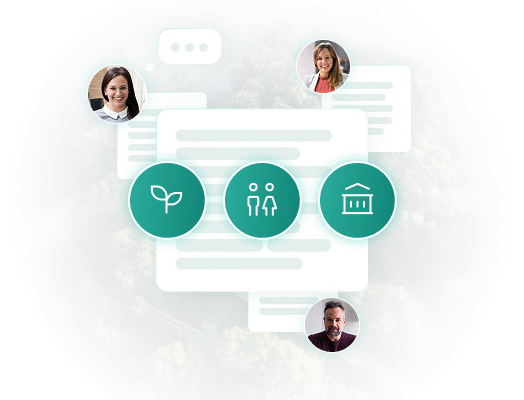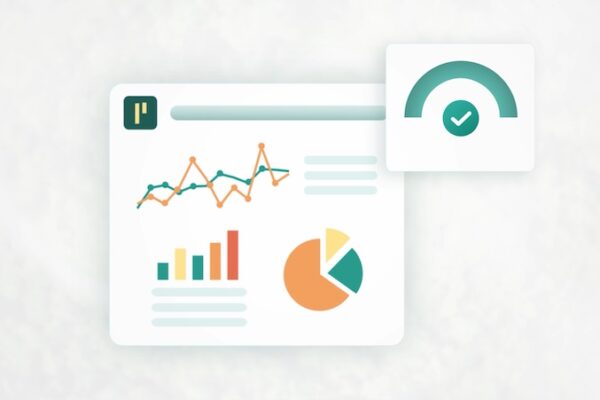Corporate Sustainability Strategy – Your 2025 Guide to Business Growth and Impact
A Corporate Sustainability Strategy is no longer a nice-to-have. In 2025, it’s the foundation of any successful business. From regulatory compliance and CSRD reporting to market differentiation and brand trust, sustainability strategy now shapes long-term business resilience, profitability, and competitive positioning.
In this guide, we’ll show you how to build a winning corporate sustainability strategy with real-world examples, core elements, and the latest innovations like AI-powered sustainability reporting tools. Whether you’re a multinational or an SME navigating new ESG demands, this roadmap is built for 2025 and beyond.
What Is a Corporate Sustainability Strategy?
A corporate sustainability strategy is a structured plan that aligns environmental and social responsibility with your company’s core business goals. It’s not just about ESG reporting—it’s about integrating purpose and performance into every layer of your operations.
Key characteristics:
-
Strategic alignment between business and sustainability
-
Clear sustainability KPIs (carbon, diversity, governance, etc.)
-
Ongoing communication and transparency with stakeholders
A strong strategy ensures you’re not just compliant—but competitive.
Why Sustainability Is Crucial for Corporate Strategy Today
In 2025, the pressure is real.
-
Customers prefer companies with ethical values
-
Regulators are enforcing stricter compliance (especially CSRD)
-
Investors are shifting capital toward ESG-aligned businesses
Failing to act on sustainability means losing trust, visibility, and funding. On the flip side, having a well-executed strategy gives your brand an advantage in hiring, retention, innovation, and sales.
From Compliance to a Winning Corporate Strategy for Business Sustainability
Too many companies treat sustainability reporting as a checkbox. But the real leaders use it as a growth engine.
Over the past nine months, the urgency of compliance led to a rushed implementation of the complex CSRD framework. While well-intentioned, the initial standard proved overwhelming—especially for small and medium-sized enterprises (SMEs). As the far-reaching implications became clear, concerns arose over how this could affect SME competitiveness. The response? The Omnibus Initiative—designed to simplify legislation and make the CSRD more manageable.
However, many businesses had already invested time and resources into sustainability transformation. Rather than pull back, they now seek to maintain momentum, communicate their efforts transparently, and ensure these investments continue to deliver value. This is where solutions like Planmark help companies move from reactive reporting to a proactive, long-term sustainability strategy.
Corporate Sustainability Strategy Example
Let’s take an example. A mid-sized European manufacturing company adopted a corporate sustainability strategy in early 2023. Here’s what they did:
-
Conducted a double materiality assessment
-
Identified key ESG priorities: energy use, supplier transparency, and DEI
-
Switched to 80% renewable energy within 12 months
-
Launched a supplier code of conduct with quarterly audits
-
Set measurable DEI targets and published progress
Outcomes by 2025:
-
Reduced energy costs by 18%
-
Secured a new €5M contract from a customer requiring ESG compliance
-
Attracted top talent due to strong sustainability reputation
-
Increased customer loyalty and NPS score
This shows that sustainability isn’t just ethical—it’s profitable.
How to Build a Corporate Sustainability Strategy
Step 1 – Use Double Materiality to Identify What Matters
Double materiality looks both at how the world impacts your business and how your business impacts the world.
Step 2 – Define Clear Goals and ESG Metrics
Set measurable targets like emission reduction, employee diversity, and supplier audits.
Step 3 – Engage Internal and External Stakeholders
Use collaboration tools to gather input and create buy-in across departments and suppliers.
Step 4 – Integrate Sustainability Into Corporate Strategy
Make it part of monthly internal reports, budget discussions, and board meetings.
Step 5 – Measure, Report, and Improve Continuously
Sustainability is a journey. Use dashboards, benchmarks, and third-party audits to improve every quarter.
Corporate Environmental Sustainability Strategy – Key Elements
Environmental impact is at the heart of every sustainability plan. Here are the essentials in 2025:
-
Carbon emissions tracking (Scopes 1, 2, 3)
-
Green procurement and supply chain visibility
-
Energy efficiency and circularity
-
AI-driven data collection and real-time monitoring
How CSRD Impacts SMEs in 2025
The Corporate Sustainability Reporting Directive (CSRD) is one of the most comprehensive ESG frameworks to date. For SMEs, the burden is heavy—new requirements mean tracking carbon emissions, social governance policies, supply chain risks, and more.
That’s why more SMEs now use platforms like Planmark, which simplify CSRD compliance, reduce manual labor, and ensure data integrity. Instead of CSRD, SMEs can also adopt the VSME standard or use both standards in parallel to leverage the best aspects of each. These tools also help SMEs improve transparency, secure funding, and compete in tenders that require verified ESG credentials.
Benefits of AI-Powered Sustainability Software
AI is transforming how companies build and manage ESG strategy. Here’s how:
-
Automated data collection from internal systems
-
Real-time dashboards for management and investors
-
Predictive analytics for goal forecasting
-
CSRD/VSME-ready output to ensure compliant reports
-
Error detection and insight discovery through natural language AI
Instead of creating reports, your team can focus on creating real impact.
Common Mistakes in Sustainability Strategy and How to Avoid Them
-
Treating sustainability as marketing – it must align with operations
-
Ignoring the supply chain – ESG risk often lies upstream
-
No employee engagement – culture drives change
-
Vague goals – use specific, measurable KPIs
-
No digital tools – manual tracking doesn’t scale
The Future of ESG Strategy: Predictions Beyond 2025
Looking ahead, ESG and corporate sustainability strategies will become core to operations:
-
Real-time reporting will become standard
-
Sustainability data will affect credit ratings and insurance costs
-
Buyers will require ESG credentials from all vendors
-
ESG will fuel innovation in materials, energy, and product design
-
AI will guide sustainability decision-making in real-time
In short, ESG isn’t just compliance—it’s smart business strategy.
Deep Dive: What Is Double Materiality and Why It Matters
Double materiality asks:
-
How do sustainability issues affect the company’s value?
-
How does the company impact the environment and society?
This dual lens helps prioritize ESG topics and is now mandatory in CSRD reporting.
Sustainability Strategy by Industry
Manufacturing
Focus: circularity, emissions, energy savings.
Technology & SaaS
Focus: data security, remote work, cloud energy use.
Retail & Consumer Goods
Focus: packaging, ethical sourcing, transparent labeling.
Construction & Real Estate
Focus: green building standards, waste reduction, lifecycle analysis.
How to Communicate Your Sustainability Strategy Effectively
Don’t keep your strategy a secret. Transparency drives trust. Here’s how to communicate:
-
Publish regular ESG or sustainability reports
-
Create a dedicated web page outlining goals and progress
-
Use LinkedIn, webinars, and emails to engage customers and partners
-
Share real numbers (“30% emissions reduction”) instead of vague promises
-
Celebrate employee contributions and create internal ambassadors
-
Avoid greenwashing – always link to data and verified results
Final Thoughts – Make Sustainability a Core Business Advantage
Sustainability isn’t just about avoiding risk—it’s a growth driver. With the right strategy, tools, and mindset, your company can lead the way toward a more sustainable and profitable future.
2025 is a pivotal year. While regulatory frameworks are still evolving, one thing is clear: companies that took early action now stand to benefit. They’re not just checking boxes—they’re building credibility, driving brand trust, and future-proofing their operations.
With smart tools like Planmark, sustainability can become easier to manage and communicate—transforming complexity into clarity, and regulation into real strategic advantage.
Need Help Simplifying Sustainability?
At Planmark, we’ve helped dozens of companies—especially SMEs—go beyond compliance to build transparent, efficient, and impactful sustainability strategies. From AI-powered ESG tools to CSRD-ready reporting, we make sustainability understandable and achievable.
👉 Let’s talk about how your company can lead with clarity and confidence: www.planmark.fi


